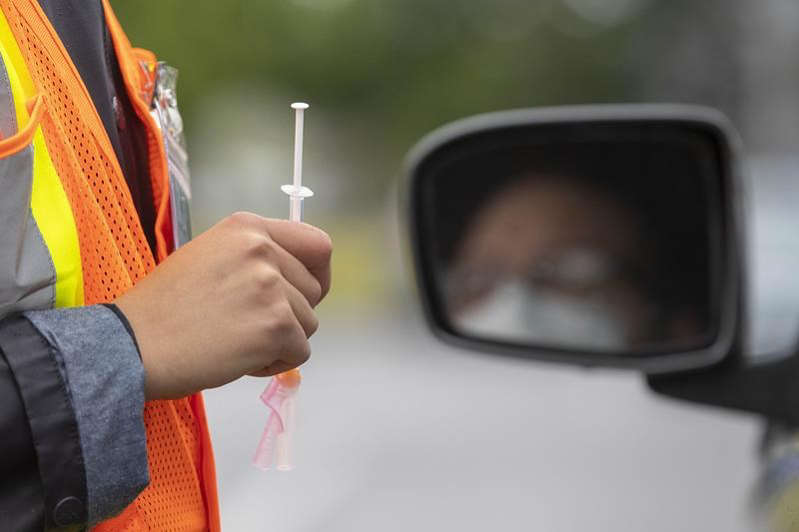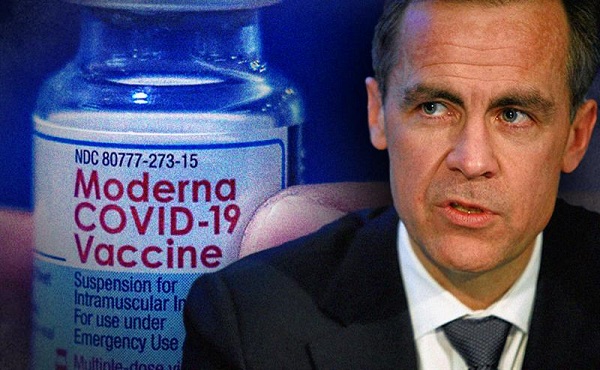COVID-19
Report Shows Politics Trumped Science on U.S. Vaccine Mandates

From the Frontier Centre for Public Policy
By Lee Harding
If you thought responsible science drove the bus on the pandemic response, think again. A December 2024 report by the U.S. House of Representatives Select Subcommittee, Coronavirus Pandemic shows that political agendas made regulatory bodies rush vaccine approvals, mandates, and boosters, causing public distrust.
“After Action Review of the COVID-19 Pandemic: The Lessons Learned and a Path Forward” praised the Trump administration’s efforts to speed up vaccine development. By contrast, the report said presidential candidate Joe Biden and vice-presidential candidate Kamala Harris undermined public confidence.
“[W]hy do we think the public is gonna line up to be willing to take the injection?” Joe Biden asked on September 5, 2020. This quote appeared in a Politico article titled “Harris says she wouldn’t trust Trump on any vaccine released before [the] election.”
The House report noted, “These irresponsible statements eventually proved to be outright hypocrisy less than a year later when the Biden-Harris Administration began to boldly decry all individuals who decided to forgo COVID-19 vaccinations for personal, religious, or medical reasons.”
Millions of doses of COVID-19 vaccines were administered beginning in December 2020 under an Emergency Use Authorization. This mechanism allows unapproved medical products to be used in emergency situations under certain criteria, including that there are no alternatives. The only previous EUA was for the 2004 anthrax vaccine, which was only administered to a narrow group of people.
By the time vaccines rolled out, SARS-CoV-2 had already infected 91 million Americans. The original SARS virus some 15 years prior showed that people who recovered had lasting immunity. Later, a January 2021 study of 200 participants by the La Jolla Institute of Immunology found 95 per cent of people who had contracted SARS-CoV-2 (the virus behind COVID-19) had lasting immune responses. A February 16, 2023 article by Caroline Stein in The Lancet (updated March 11, 2023) showed that contracting COVID-19 provided an immune response that was as good or better than two COVID-19 shots.
Correspondence suggests that part of the motivation for full (and not just emergency) vaccine approval was to facilitate vaccine mandates. A July 21, 2021, email from Dr. Marion Gruber, then director of vaccine reviews for the Food and Drug Administration (FDA), recalled that Dr. Janet Woodcock had stated that “absent a license, states cannot require mandatory vaccination.” Woodcock was the FDA’s Principal Deputy Commissioner at the time.
Sure enough, the FDA granted full vaccine approval on August 23, 2021, more than four months sooner than a normal priority process would take. Yet, five days prior, Biden made an announcement that put pressure on regulators.
On August 18, 2021, Biden announced that all Americans would have booster shots available starting the week of September 20, pending final evaluation from the FDA and the U.S. Centers for Disease Control and Prevention (CDC).
Some decision-makers objected. Dr. Marion Gruber and fellow FDA deputy director of vaccine research Dr. Philip Krause had concerns regarding the hasty timelines for approving Pfizer’s primary shots and boosters. On August 31, 2021, they announced their retirements.
According to a contemporary New York Times article, Krause and Gruber were upset about Biden’s booster announcement. The article said that “neither believed there was enough data to justify offering booster shots yet,” and that they “viewed the announcement, amplified by President Biden, as pressure on the F.D.A. to quickly authorize them.”
In The Lancet on September 13, 2021, Gruber, Krause, and 16 other scientists warned that mass boosting risked triggering myocarditis (heart inflammation) for little benefit.
“[W]idespread boosting should be undertaken only if there is clear evidence that it is appropriate,” the authors wrote. “Current evidence does not, therefore, appear to show a need for boosting in the general population, in which efficacy against severe disease remains high.”
Regardless, approval for the boosters arrived on schedule on September 24, 2021. CDC Director Dr. Rochelle Walensky granted this approval, but for a wider population than recommended by her advisory panel. This was only the second time in CDC history that a director had defied panel advice.
“[T]his process may have been tainted with political pressure,” the House report found.
Amidst all this, the vaccines were fully licensed. The FDA licensed the Comirnaty (Pfizer-BioNTech) vaccine on August 23, 2021. The very next day, Defense Secretary Lloyd Austin issued a memo announcing a vaccine mandate for the military. Four other federal mandates followed.
“[T]he public’s perception [is] that these vaccines were approved in a hurry to satisfy a political agenda,” the House report found.
The House report condemned the dubious process and basis for these mandates. It said the mandates “ignored natural immunity, … risk of adverse events from the vaccine, as well as the fact that the vaccines don’t prevent the spread of COVID-19.”
The mandates robbed people of their livelihoods, “hollowed out our healthcare and education workforces, reduced our military readiness and recruitment, caused vaccine hesitancy, reduced trust in public health, trampled individual freedoms, deepened political divisions, and interfered in the patient-physician relationship,” the report continued.
The same could be said of Canadian vaccine mandates, as shown by the National Citizen’s Inquiry hearings on COVID-19. Unfortunately, an official federal investigation and a resulting acknowledgement do not seem forthcoming. Politicized mandates led to profits for vaccine manufacturers but left “science” with a sullied reputation.
Lee Harding is a Research Fellow for the Frontier Centre for Public Policy.
COVID-19
Trump DOJ dismisses charges against doctor who issued fake COVID passports

From LifeSiteNews
Attorney General Pam Bondi has ended the federal prosecution of Dr. Michael Kirk Moore for giving ‘patients a choice when the federal government refused to do so.’
The Utah plastic surgeon who issued fake COVID-19 vaccine passports to help patients get around COVID vaccine mandates will no longer be prosecuted, U.S. Attorney General Pam Bondi announced Saturday.
During the COVID pandemic, Dr. Michael Kirk Moore Jr. and employees at his Salt Lake private practice developed a plan to provide patients who objected to being forced to take the vaccine with ineffectual, harmless saline injections instead and give them COVID vaccination cards that would satisfy (since rescinded) mandates to take the shot as a condition of employment, public facilities, mass gatherings, and more.
For his efforts, he was indicted for allegedly “endanger[ing] the health and well-being of a vulnerable population” and “undermin[ing] public trust and the integrity of federal health care programs.” The government also accused him of doing so for profit, but several sources attested off the record that Moore not only issued the cards for free but actually refused offers of compensation.
“They broke no laws and harmed no person,” the defendants’ legal team said in 2023. “Dr. Moore, specifically, abided by his long held Hippocratic oath to First Do No Harm. We believe he and his co-defendants will be found innocent of all charges.”
Last month, LifeSiteNews reported that Moore’s trial was set to begin on July 7, which could have potentially ended with him facing 35 years in jail and a $125,000 penalty. Supporters of the doctor had expressed worry that the change in presidential administration had not yet halted the prosecution.
Over the weekend, however, Bondi announced that at her direction it has now done exactly that.
“Dr. Moore gave his patients a choice when the federal government refused to do so,” she said. “He did not deserve the years in prison he was facing. It ends today.”
There is a large body of warning signs against the shots, which were developed in record time by the first Trump administration’s Operation Warp Speed initiative.
The federal Vaccine Adverse Event Reporting System (VAERS) reports 38,709 deaths, 221,030 hospitalizations, 22,331 heart attacks, and 28,966 myocarditis and pericarditis cases as of June 27, among other ailments. U.S. Centers for Disease Control & Prevention (CDC) researchers have recognized a “high verification rate of reports of myocarditis to VAERS after mRNA-based COVID-19 vaccination,” leading to the conclusion that “under-reporting is more likely” than over-reporting.
An analysis of 99 million people across eight countries published in the journal Vaccine “observed significantly higher risks of myocarditis following the first, second and third doses” of mRNA-based COVID vaccines, as well as signs of increased risk of “pericarditis, Guillain-Barré syndrome, and cerebral venous sinus thrombosis,” and other “potential safety signals that require further investigation.”
In April 2024, the U.S. Centers for Disease Control & Prevention (CDC) was forced to release by court order 780,000 previously undisclosed reports of serious adverse reactions, and a study out of Japan found “statistically significant increases” in cancer deaths after third doses of mRNA-based COVID-19 vaccines, and offered several theories for a causal link.
In January, a long-awaited Florida grand jury report on the COVID vaccine manufacturers found that while only a miniscule percentage of the millions of vaccinations resulted in serious harm based on the data it had access to, such events do occur, and there are “profound and serious issues” in pharmaceutical companies’ review process, including reluctance to share what evidence of adverse events they did find.
In May, Trump administration U.S. Food & Drug Administration (FDA) Commissioner Dr. Marty Makary and vaccine chief Dr. Vinay Prasad announced that there would no longer be blanket recommendations for all Americans to receive the shot, but the “risk factors” it would still be recommended for include asthma, cancer, cerebrovascular disease, chronic kidney diseases, a handful of chronic liver and lung diseases, diabetes, disabilities such as Down’s syndrome, heart conditions, HIV, dementia, Parkinson’s, obesity, smoking, tuberculosis, and more. Health & Human Services (HHS) Secretary Robert F. Kennedy Jr. subsequently announced COVID vaccines will not be recommended to healthy children or pregnant women.
The Trump administration has approved a new mRNA-based COVID-19 vaccine from Moderna, suggesting the federal government’s overall view of the shots will remain favorable, albeit without mandates of any kind. At the same time, it does require mRNA COVID shots to carry a new warning about the danger of heart damage in young men.
Business
Carney Liberals quietly award Pfizer, Moderna nearly $400 million for new COVID shot contracts

From LifeSiteNews
Carney’s Liberal government signed nearly $400 million in contracts with Pfizer and Moderna for COVID shots, despite halted booster programs and ongoing delays in compensating Canadians for jab injuries.
Prime Minister Mark Carney has awarded Pfizer and Moderna nearly $400 million in new COVID shot contracts.
On June 30th, the Liberal government quietly signed nearly $400 million contracts with vaccine companies Pfizer and Moderna for COVID jabs, despite thousands of Canadians waiting to receive compensation for COVID shot injuries.
The contracts, published on the Government of Canada website, run from June 30, 2025, until March 31, 2026. Under the contracts, taxpayers must pay $199,907,418.00 to both companies for their COVID shots.
Notably, there have been no press releases regarding the contracts on the Government of Canada website nor from Carney’s official office.
Additionally, the contracts were signed after most Canadians provinces halted their COVID booster shot programs. At the same time, many Canadians are still waiting to receive compensation from COVID shot injuries.
Canada’s Vaccine Injury Support Program (VISP) was launched in December 2020 after the Canadian government gave vaccine makers a shield from liability regarding COVID-19 jab-related injuries.
There has been a total of 3,317 claims received, of which only 234 have received payments. In December, the Canadian Department of Health warned that COVID shot injury payouts will exceed the $75 million budget.
The December memo is the last public update that Canadians have received regarding the cost of the program. However, private investigations have revealed that much of the funding is going in the pockets of administrators, not injured Canadians.
A July report by Global News discovered that Oxaro Inc., the consulting company overseeing the VISP, has received $50.6 million. Of that fund, $33.7 million has been spent on administrative costs, compared to only $16.9 million going to vaccine injured Canadians.
Furthermore, the claims do not represent the total number of Canadians injured by the allegedly “safe and effective” COVID shots, as inside memos have revealed that the Public Health Agency of Canada (PHAC) officials neglected to report all adverse effects from COVID jabs and even went as far as telling staff not to report all events.
The PHAC’s downplaying of jab injuries is of little surprise to Canadians, as a 2023 secret memo revealed that the federal government purposefully hid adverse effect so as not to alarm Canadians.
The secret memo from former Prime Minister Justin Trudeau’s Privy Council Office noted that COVID jab injuries and even deaths “have the potential to shake public confidence.”
“Adverse effects following immunization, news reports and the government’s response to them have the potential to shake public confidence in the COVID-19 vaccination rollout,” read a part of the memo titled “Testing Behaviourally Informed Messaging in Response to Severe Adverse Events Following Immunization.”
Instead of alerting the public, the secret memo suggested developing “winning communication strategies” to ensure the public did not lose confidence in the experimental injections.
Since the start of the COVID crisis, official data shows that the virus has been listed as the cause of death for less than 20 children in Canada under age 15. This is out of six million children in the age group.
The COVID jabs approved in Canada have also been associated with severe side effects, such as blood clots, rashes, miscarriages, and even heart attacks in young, healthy men.
Additionally, a recent study done by researchers with Canada-based Correlation Research in the Public Interest showed that 17 countries have found a “definite causal link” between peaks in all-cause mortality and the fast rollouts of the COVID shots, as well as boosters.
Interestingly, while the Department of Health has spent $16 million on injury payouts, the Liberal government spent $54 million COVID propaganda promoting the shot to young Canadians.
The Public Health Agency of Canada especially targeted young Canadians ages 18-24 because they “may play down the seriousness of the situation.”
-

 Business1 day ago
Business1 day agoCarney government should apply lessons from 1990s in spending review
-

 Business1 day ago
Business1 day agoTrump to impose 30% tariff on EU, Mexico
-

 illegal immigration2 days ago
illegal immigration2 days agoICE raids California pot farm, uncovers illegal aliens and child labor
-

 Entertainment1 day ago
Entertainment1 day agoStudy finds 99% of late-night TV guests in 2025 have been liberal
-

 Energy1 day ago
Energy1 day agoLNG Export Marks Beginning Of Canadian Energy Independence
-

 Frontier Centre for Public Policy14 hours ago
Frontier Centre for Public Policy14 hours agoCanada’s New Border Bill Spies On You, Not The Bad Guys
-

 Uncategorized13 hours ago
Uncategorized13 hours agoCNN’s Shock Climate Polling Data Reinforces Trump’s Energy Agenda
-

 Opinion6 hours ago
Opinion6 hours agoPreston Manning: Three Wise Men from the East, Again



